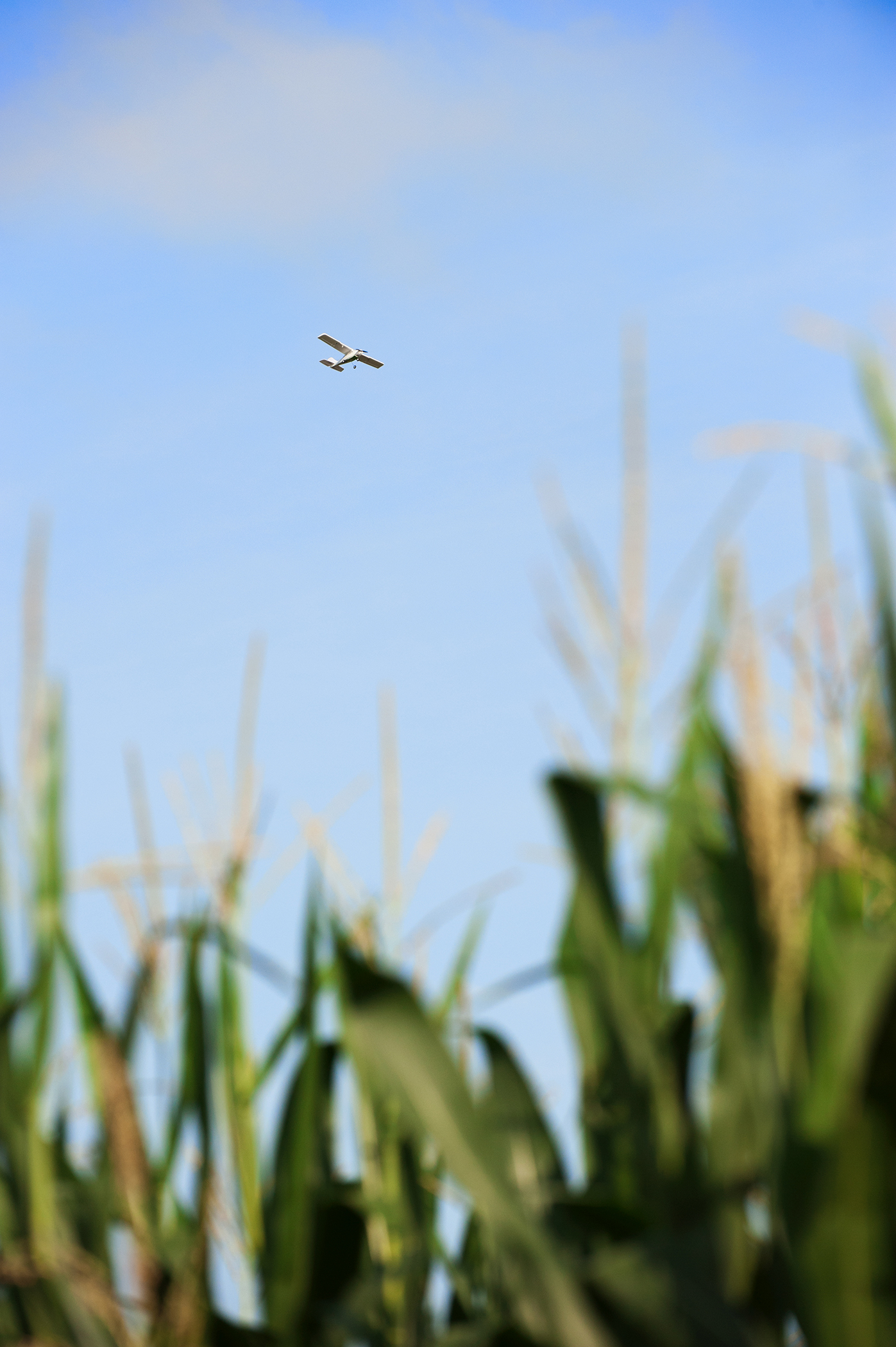Contact: Vanessa Beeson

Photo by: Beth Wynn
STARKVILLE, Miss.--It is hard to compare an unmanned aerial vehicle to a magnetic resonance imaging--MRI--machine, but that is how the director of Mississippi State's Geosystems Research Institute sees it.
"The plant is the patient, the agronomists are the doctors and I am the guy that works on the MRI machine," Robert Moorhead said.
UAVs are the newest instrument being used in the prescription of precision agriculture, said Moorhead, who also is the Billie J. Ball Professor of Electrical and Computer Engineering in the university's Bagley College of Engineering.
Mississippi State currently holds certificates of authorization from the Federal Aviation Administration to operate UAVs for research purposes only, and scientists in the MSU-based Mississippi Agricultural and Forestry Experiment Station have been using UAVs in their agricultural investigations.
Flying above tractors and well below the aircraft--a space hotly contested right now--the aerial equipment has only been approved, to date, for commercial use in a very limited capacity in the Arctic regions.
The FAA agency is developing regulations for UAV's commercial use, and Congress has issued a deadline of September 2015 for the regulatory body to establish rules specifically for small unmanned aerial systems, or UAS.
In the meantime, Moorhead and his GRI colleagues are working with MAFES agronomists to incorporate the use of unmanned aerial vehicles in site-specific agricultural research. He said campus scientists are using the aerial equipment in the research of plant growth, nutrient management, irrigation and herbicide application.
As Moorhead explained, the practice of precision agriculture requires a number of other acronymic-titled technologies, including GPS (global positioning system), GIS (geographic information systems) and RS (remote sensing). All are designed to collect and analyze site-specific data that then is used to create and apply effective prescriptions for every inch of an agricultural field.
Up until now, remote sensing data has been collected through ground instrumentation, fixed-wing aircraft and satellite.
"UAVs now are another remote sensing tool available to collect visual and multispectral data," Moorhead said. "Precision agriculture is data-driven and UAV technology adds another significant layer of data for researchers and ultimately crop consultants and producers to assess and utilize in a meaningful way."
In one recent research study focusing on plant growth, GRI worked with Brien Henry, MSU plant and soil sciences associate professor.
Henry's patient is the corn plant. In the study, he and his team planted multiple corn hybrids at a range of planting dates and plant densities. They worked from March to May at locations in Starkville, Brooksville and Verona, with March 13 as the earliest planting date. Their per-acre plant populations ranged 20,000-40,000.
Utilizing UAVs, team members collected plant population data, including details on emergence progress, number of plants per acre, their heights and number of unfurled leaves, leaf-area indexes, and growth stages.
While the study by Henry's team was in its second year, this was the first time UAV technology was used to augment research on the ground.
"They were flying overhead and collecting visual and multispectral data," Henry said. At the same time, the ground team was analyzing the data "to ensure images from above are what we were actually seeing on the ground."
Henry said a primary goal of his research is the development of automated computer programs that can recognize individual seedlings and quickly and accurately determine plant density across a planted field. Spatially-explicit maps of plant population would allow producers to make timely and informed decisions about replanting, he added.
UAVs are capable of flying as low as 100 feet above the ground, while small aircraft must operate at elevations between 2,000-3,000 feet. Of course, satellites can only look down from space orbit. Clearly, a difference in altitude can impact resolutions dramatically.
Henry said UAVs can zoom in approximately to one-eighth of an inch, while planes and satellites are limited to collecting images at resolutions of only about 18 inches. Also, UAV images may be collected during inclement weather conditions, and just one UAV can cover approximately 1,000 acres in an hour.
For researchers, the most critical UAV component is its payload, or camera, system. Various payloads can collect both visual and multispectral images and real-time high-definition video. Other advantages include:
--Data that may be collected as a single image or mosaics showing either portions or an entire field;
--Much faster access and lower costs than surveying fields in traditional aircraft; and
--Immediate downloading of data to a tablet or smart phone, thus expediting the process so researchers can quickly and more efficiently evaluate the information they are seeking.
"UAV technology provides additional eyes on the field," Henry said. "I hope that someday the technology helps producers assess and address potential stand issues quickly and accurately."
Wes Burger, associate MAFES director, said precision agriculture "currently encompasses a vast wealth of data-driven applications. These applications are built on sound research that characterizes relationships between observable phenomenon and plant performance."
Observing that precision agriculture research "is about connecting data to decisions," Burger said, "The meaningful data within those applications helps drive every decision the farmer makes in the field."
Burger also said MAFES researchers "hope the data collected with UAVs will augment and improve current management practices so farmers can improve yield, productivity and profit while enhancing environmental stewardship."
For more information about Mississippi State, visit www.msstate.edu.